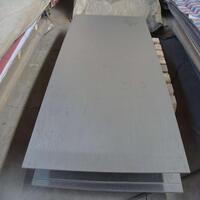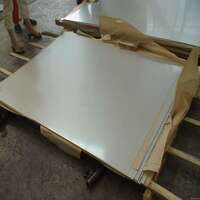1. Introduction
When you hear ‘metal clad,’ your mind might jump to electrical wiring or industrial piping—but in the world of cutting-edge architecture, metal clad has taken on a whole new meaning. Today, architects and builders are increasingly turning to metal clad systems not just for function, but for form, sustainability, and resilience. From sleek steel facades to weathering corten steel siding and zinc-clad dormers, metal cladding is redefining what’s possible in modern building design.

This isn’t your grandfather’s corrugated shed siding. We’re talking about precision-engineered, multi-layered clad metals that merge performance with artistry. Let’s dive into how metal clad is being used in niche, high-value applications across contemporary construction.
2. What Does ‘Metal Clad’ Really Mean?
Before we explore applications, let’s clarify the term. ‘Clad metal meaning’ refers to a composite material made by bonding two or more different metals—like aluminum clad steel or stainless clad aluminum—to combine the best properties of each. This process can be achieved through roll bonding, explosion bonding, or electroplating.
In architecture, ‘metal clad’ typically describes exterior building components—walls, roofs, or panels—covered with a layer of metal for protection, aesthetics, or both. Whether it’s a metal clad wall, a metal clad roof, or even a full metal clad house, the goal is enhanced durability, low maintenance, and striking visual impact.
3. High-Performance Metal Facades in Sustainable Design
3.1. Corten Steel Facades: Beauty in Patina
One of the most dramatic uses of metal clad in architecture is the corten steel facade. Corten steel—a weathering steel alloy—develops a stable rust-like appearance when exposed to the elements, eliminating the need for painting while offering exceptional longevity. Designers love it for its raw, organic aesthetic and minimal upkeep.

Corten steel siding cost can be higher upfront than traditional materials, but its lifecycle value often justifies the investment. It’s commonly used in cultural institutions, urban infill projects, and high-end residential builds where a bold, industrial look is desired.
3.2. Zinc and Copper Cladding: Elegance Meets Longevity
Zinc facade systems and copper siding offer a softer, more refined alternative. Zinc metal siding naturally forms a protective patina over time, resisting corrosion for over 100 years in some cases. A zinc clad roof or zinc clad dormer adds subtle texture and timeless elegance.
Similarly, copper siding ages gracefully into a greenish-blue verdigris, making it a favorite for heritage-sensitive or luxury developments. Both materials are 100% recyclable, aligning with green building standards like LEED and BREEAM.
4. Advanced Cladding Systems for Commercial and Institutional Buildings
4.1. Standing Seam and Vertical Panel Systems

Modern metal clad buildings often feature standing seam siding—especially colorbond standing seam or pac clad standing seam roof systems. These interlocking panels provide superior weather resistance, thermal performance, and clean lines. Vertical standing seam metal siding is increasingly popular for its contemporary look and ability to accentuate height.
Pac clad hwp (high-wall panels), pac clad coping, and pac clad column covers are engineered solutions that integrate seamlessly with curtain walls, parapets, and structural elements, offering both protection and architectural continuity.
4.2. Aluminum Clad Composites and Hybrid Systems
Aluminum clad steel and aluminum clad sheet materials are widely used in rainscreen systems. These lightweight yet robust panels combine the corrosion resistance of aluminum with the strength of steel. Aluminium clad sheet is especially common in coastal environments where salt exposure demands high-performance cladding.
For insulation, aluminum clad pipe insulation and metal clad insulation wraps help maintain thermal efficiency in HVAC and industrial applications—though in architecture, insulated metal panels (IMPs) with metal clad exteriors are gaining traction for their all-in-one structural and thermal benefits.
5. Specialty Applications and Material Innovations
Beyond facades, clad metals appear in unexpected places. Titanium clad panels offer extreme corrosion resistance for labs or marine structures. Stainless clad aluminum and copper nickel clad materials serve in chemical processing or desalination plants—but their aesthetic potential is now being tapped in boutique architecture.
Even traditional elements like metal weatherboard or exterior corrugated metal siding are being reimagined with modern alloys. A steel clad house might use 1/8 inch steel plate or corten steel plate for a monolithic appearance, while diamond plate steel or aluminum diamond tread plate adds slip resistance to entryways or rooftop terraces.
For those sourcing materials, options like 6061 T6 aluminum plate, 316 stainless steel plate, or ASTM A387 alloy plate provide the structural backbone for custom cladding systems. And yes—you can find steel plate for sale near you, but architectural-grade clad metals often come from specialized fabricators like Steel Clad Inc.
6. Conclusion
Metal clad is far more than a utilitarian covering—it’s a design language. In niche architectural applications, clad metals enable buildings to perform better, last longer, and stand out visually. Whether it’s a corten steel siding installation, a zinc clad roof over a modern loft, or a pac clad standing seam facade on a downtown office, metal clad systems represent the fusion of engineering and artistry. As sustainable design pushes innovation forward, expect to see even more creative uses of clad metal meaning in the built environment.
Our Website founded on October 17, 2012, is a high-tech enterprise committed to the research and development, production, processing, sales and technical services of ceramic relative materials such as Metal. Our products includes but not limited to Boron Carbide Ceramic Products, Boron Nitride Ceramic Products, Silicon Carbide Ceramic Products, Silicon Nitride Ceramic Products, Zirconium Dioxide Ceramic Products, etc. If you are interested, please feel free to contact us.
